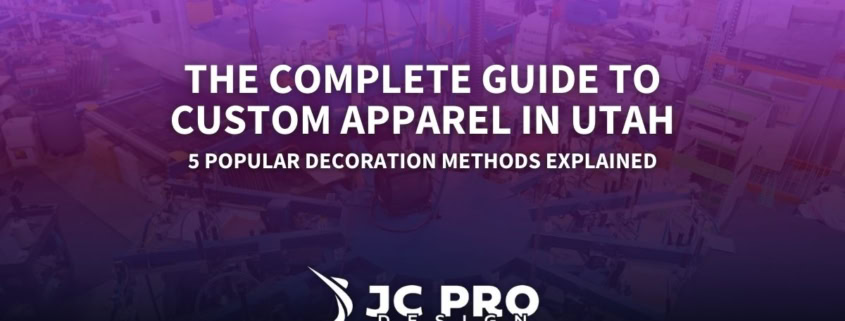The Complete Guide to Custom Apparel in Utah: 5 Popular Decoration Methods Explained
When you need custom apparel, choosing the right decoration method is just as important as selecting the perfect garment. At JC Pro Design, we offer a wide range of decoration techniques to suit your specific needs. Each method has its own advantages and unique applications, making certain options better for different projects.
Let’s break down the most common decoration methods and help you understand which one might work best for your next custom apparel project.
1. Screen Printing
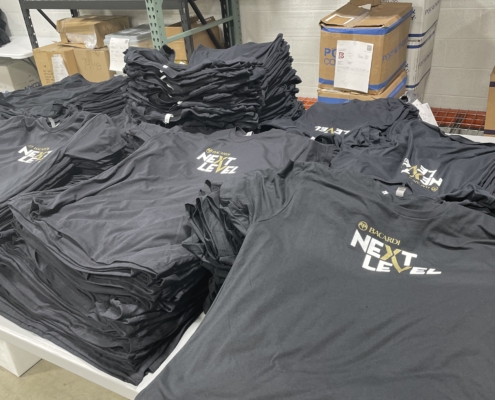
Bacardi Large Run Size Screenprint
Screen printing remains one of the most popular and widely recognized decoration techniques in the industry.
How it works: Ink is pushed through a mesh screen onto the garment. Each color requires a separate screen.
Pros:
- Cost-effective for large runs
- Durable prints that last
- Vibrant, solid colors
- Excellent for simple designs
- More economical as quantity increases
Cons:
- Less practical for small quantities
- Setup costs can be high for multi-color designs
- Not ideal for photorealistic images
Best for: Team uniforms, company shirts, events with large orders, designs with limited colors
2. Direct-to-Garment (DTG)
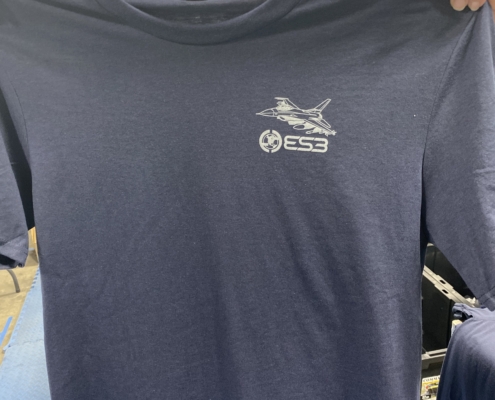
ES3 Detailed DTG Print
DTG printing uses specialized inkjet technology to print directly onto fabric.
How it works: A digital print head applies ink directly to the garment, similar to how a paper printer works but designed for textiles.
Pros:
- Full-color capability (CMYK printing)
- Exceptional image quality and detail
- Perfect for photorealistic images
- No setup costs or minimum orders
- Softest hand feel of any printing method
- Ideal for one-offs and small runs
Cons:
- Limited to certain fabric types (works best on 100% cotton)
- Can be slower for large production runs
- Higher cost per unit for large quantities
- Not as durable as screen printing
Best for: Full-color designs, photorealistic prints, small batches, samples, and print-on-demand products
3. Heat Transfer Vinyl (HTV)
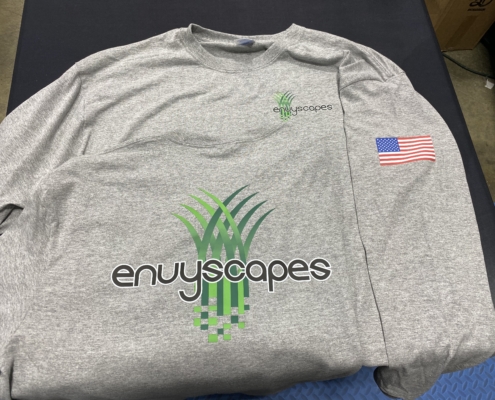
Envyscapes Multi Location Full Color HTV Print
HTV involves cutting vinyl material and applying it to garments with heat.
How it works: Designs are cut from colored vinyl sheets and applied to garments using a heat press.
Pros:
- Great for small runs
- Excellent detail and clean lines
- Versatile placement options
- Special effects available (metallic, reflective, glitter)
- No minimum order requirements
- Works well with polyester blends
Cons:
- More labor-intensive for large orders
- May not be as durable as screen printing
- Some special materials may have a thicker hand feel
Best for: Names and numbers, small orders, specialty effects like metallic or reflective, detailed designs with clean lines
4. Embroidery
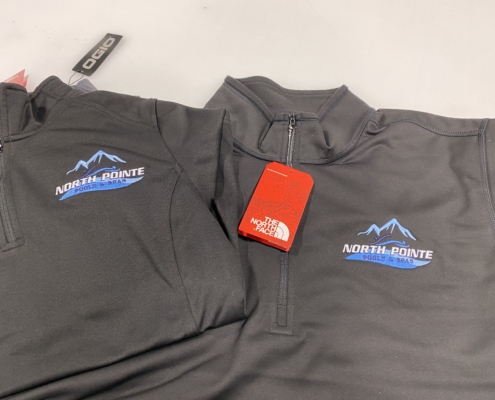
North Pointe Company Uniform Embroidery
Embroidery uses thread to stitch designs directly into the fabric.
How it works: A computerized machine sews your design into the garment using specialized thread.
Pros:
- Premium, professional appearance
- Exceptional durability
- Perceived higher value
- Withstands repeated washing
- Great for workwear and corporate apparel
- Classic, timeless look
Cons:
- Limited detail capability due to thread thickness
- Placement restrictions (requires machine arm access)
- Not ideal for very small text or intricate details
- Higher cost for large designs or complex logos
Best for: Corporate apparel, polos, hats, jackets, bags, workwear, and items that need longevity
5. Patches
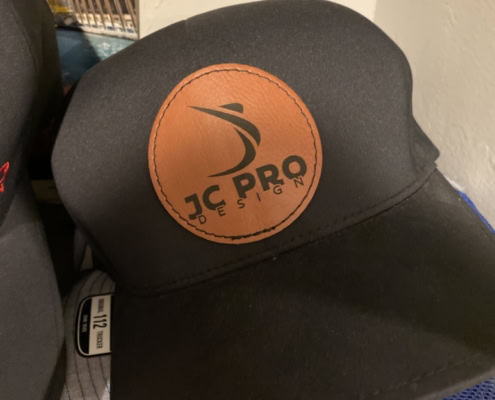
Patches are a unique way to add dimensional decorations to garments.
How it works: Pre-made patches are created using various materials and then attached to garments.
Types of patches:
- Embroidered patches: Traditional sewn patches with a classic look
- PVC patches: Made from flexible, molded plastic with sharp detail
- Leather patches: Made from genuine or synthetic leather for a premium look
- Injection molded: 3D plastic patches with exceptional detail
Pros:
- Can achieve effects not possible with direct decoration
- Removable in some applications
- Highly detailed and dimensional options
- Great for specialized looks
- PVC options offer weatherproof durability
Cons:
- Additional production step to attach patches
- Some patch types limited to sew-on application
- Can add bulk to the garment
Best for: Tactical gear, bags, hats, outdoor equipment, promotional items, special applications requiring durability or 3D effects
How to Choose the Right Method
When selecting a decoration method, consider these factors:
- Quantity: How many items do you need?
- Complexity: How detailed is your design?
- Colors: How many colors are in your artwork?
- Fabric: What material are you decorating?
- Budget: What’s your price point?
- Durability: How long does the item need to last?
- Timeline: How quickly do you need the product?
Get Expert Advice from JC Pro Design in Salt Lake City, UT
Choosing between screen printing, DTG, heat transfer, embroidery, or patches can be challenging. That’s why we’re here to help guide you to the best solution for your specific needs.
Are you tired of missed deadlines, inconsistent quality, or unexpected costs eating into your marketing budget? You’re not alone. Many marketing managers and business owners struggle to find a reliable partner for their custom apparel needs, especially when consistent branding across large orders is critical.
Ready to eliminate the headaches of your next custom apparel project? Fill out the form below to get a free consultation, and let our decoration experts show you how we can deliver high-quality, on-time results that make your team and brand look exceptional.

